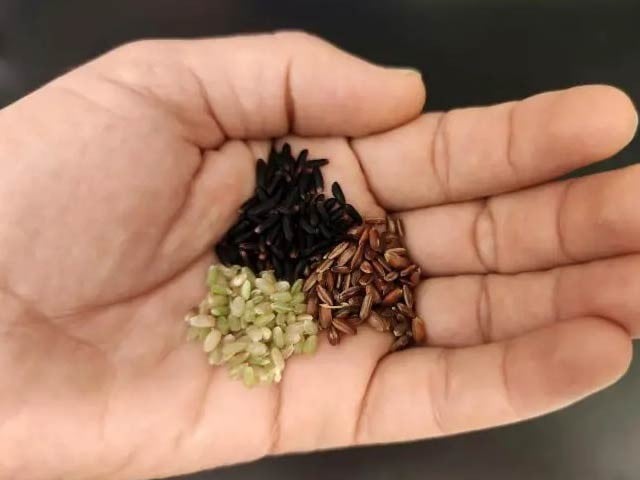Saudi experts have developed black, red and brown rice with various valuable nutrients. Photo: Sci-Tech Daily
Riyadh: The King Abdulaziz University of Science and Technology in Saudi Arabia has developed black, red and brown rice using genetic technology. But it is not just the colored rice but the color has changed due to the nutrients in it.
Crisper technology rice contains micronutrients. This is why black rice is similar to Indonesian camphoring rice. But the main purpose of this research is to eliminate malnutrition with the help of rice because one type of rice contains copper and steel, another type contains zinc and manganese, and the third type contains an important trace element called selenium.
An international team led by scientists Majdi Mahfouz and Khalid Siddique has successfully tried to add desired ingredients to rice. This rice grows fast and the crop matures quickly. For this, they have studied the rice cultivated all over the world.
Experts have taken three black and two red rice varieties and studied their entire genomes. Apart from this, 46 other varieties of rice were also considered.
Then the most nutritious rice was selected from among them. Surprisingly, black rice had the highest nutritional content including carbohydrates, amino acids, secondary metabolites, lipids, peptides and various vitamins. Then, copper, steel, manganese and selenium are also found in the same black rice. Although the human body requires small amounts of these metals, their deficiency can cause serious diseases and problems.
In the next step, these scientists will improve the famous Hasavi rice of Saudi Arabia with genetic technology.
(function(d, s, id){
var js, fjs = d.getElementsByTagName(s)[0];
if (d.getElementById(id)) {return;}
js = d.createElement(s); js.id = id;
js.src = “//connect.facebook.net/en_US/sdk.js#xfbml=1&version=v2.3&appId=770767426360150”;
fjs.parentNode.insertBefore(js, fjs);
}(document, ‘script’, ‘facebook-jssdk’));
(function(d, s, id) {
var js, fjs = d.getElementsByTagName(s)[0];
if (d.getElementById(id)) return;
js = d.createElement(s); js.id = id;
js.src = “//connect.facebook.net/en_GB/sdk.js#xfbml=1&version=v2.7”;
fjs.parentNode.insertBefore(js, fjs);
}(document, ‘script’, ‘facebook-jssdk’));


